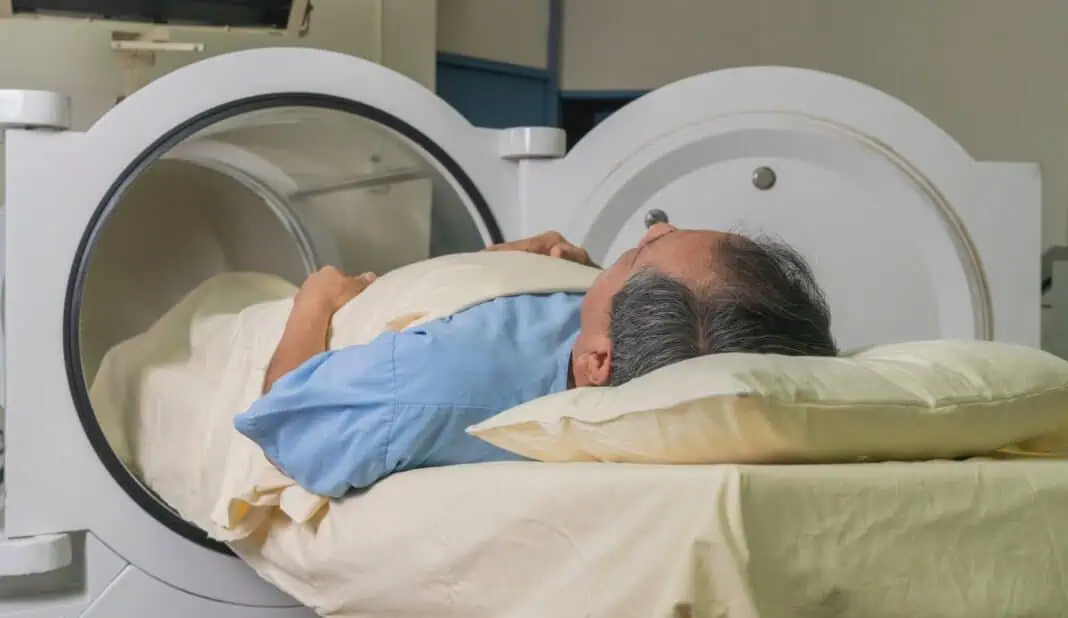Hyperbaric oxygen therapy is showing it can be used for cases beyond counteracting the bends after a deep dive.
The latest clinical study on the use of hyperbaric oxygen therapy to treat and help heal brain wounds and reduce symptoms from brain injuries has showed positive results.
The journal Scientific Reports recently published the results from a double-blind, randomized trial of hyperbaric oxygen for persistent symptoms after brain injury. The study of 47 brain-wounded patients was overseen by Dr Lindell Weaver, who was the principal author of a previous positive clinical HBOT trial.
According to the TreatNOW Coalition:
“This study is the 18th clinical trial among 27 peer-reviewed studies that all show the positive effects of HBOT for treating and helping heal brain wounds from TBI/PTSD.”
The coalition and its affiliated 160+ free-standing HBOT clinics have helped over 31,000 patients with TBI/PTSD recover from brain wounds. Among those are over 12,000 Veterans, including over 700 Special Operators.
“During this same twenty year time period, over 153,000 Veterans have succumbed to suicide, and over 110,000 Veterans have died due to drug overdoses, too many of them under VA care and using prescribed drugs that warn of suicidal ideation.”
There is a strong correlation between untreated brain wounds and suicidal ideation, according to the coalition. Symptoms of PTSD and TBI include: headaches, dizziness or balance problems, blurred vision, tinnitus, tiredness/fatigue or sleep problems, seizures, remembering things or solving problems, managing stress or emotional upsets, controlling temper/irritability, anxiety, depression, suicidal ideation and post-traumatic stress.
“Evidence-based medicine, clinical outcomes, 18 clinical trials, and hundreds of studies confirm that hyperbaric oxygenation works where little done by the VA and DoD is effective to stanch the upward trending suicidal epidemic. Over 877,450 brain wounded post-9/11 service members are untreated and/or misdiagnosed as suffering from mental health problems, not actual physical wounds to the brain.”

